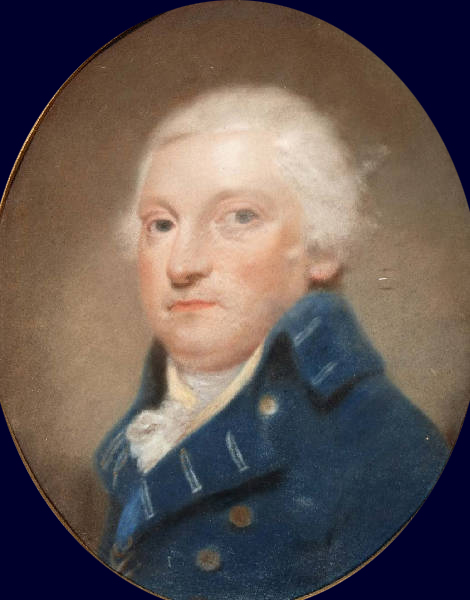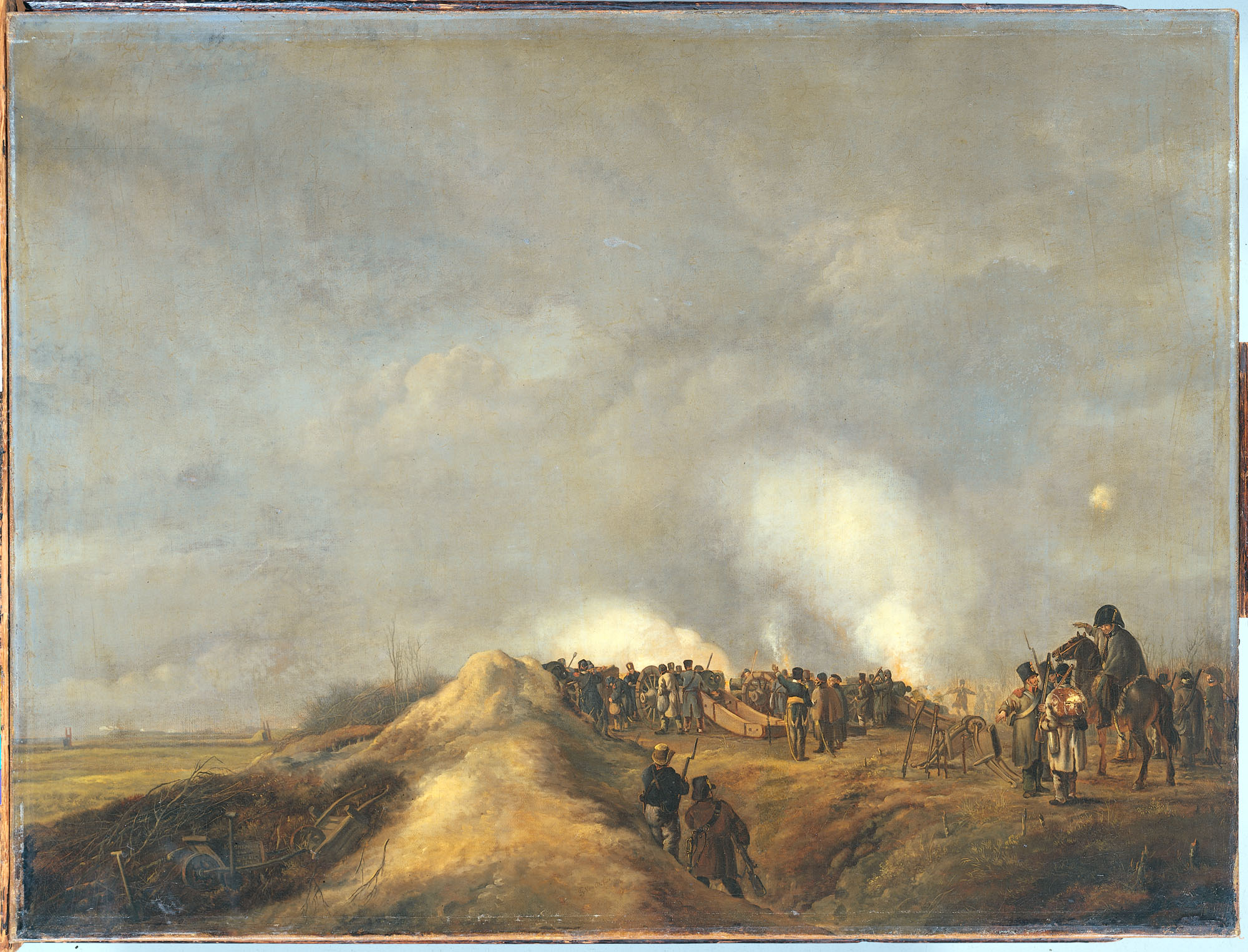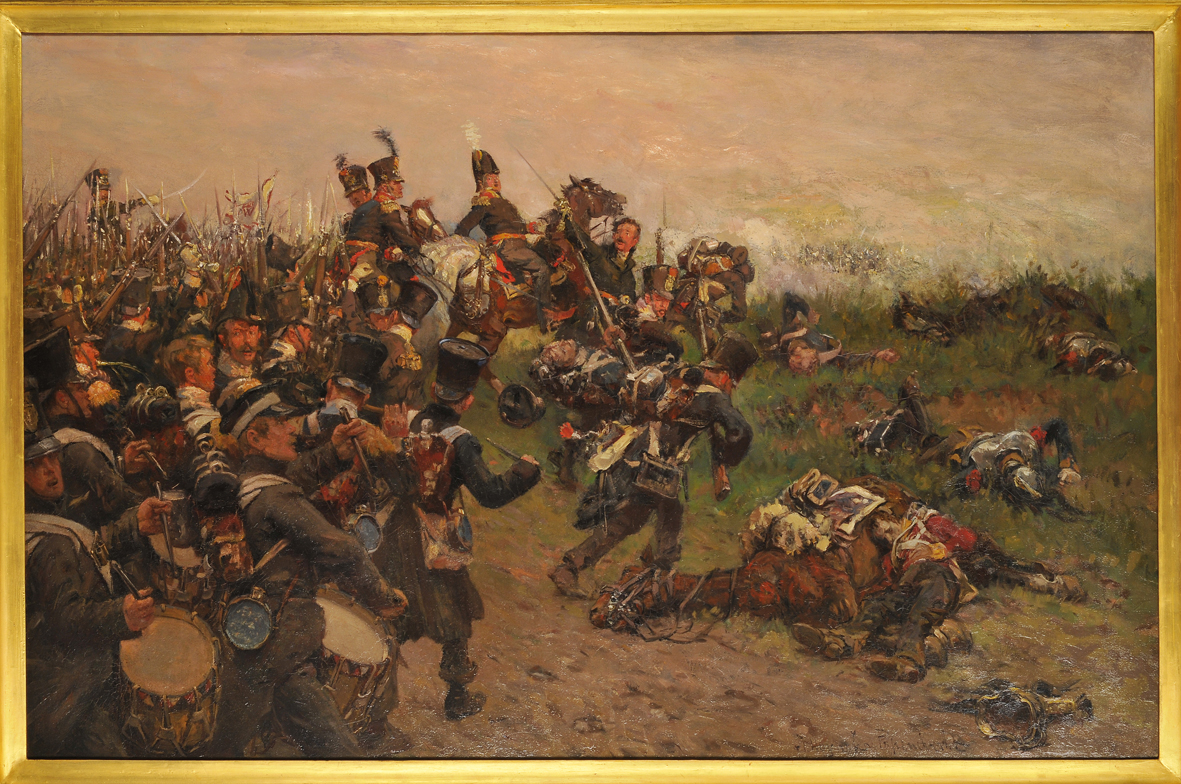
The society "2e Bataillon Grenadier Compagnie" [eng.: "2nd Batallion Grenadier Company"] was raised in november 2005, 192 years after the original military unit was raised at the start of the War of Liberation in the Netherlands. We portray soldiers and civilians from the 1813-1815 period. By doing this, we bring history to life, not only for ourselves but also for the public.
Safety and authenticity play a major part in the way we enjoy our hobby. We are a family-orientated group; group membership is non-discriminatory in regard to gender or any other criteria. Everyone with an interest in (military) history, and with the intention to invest time, energy and money in a historic portrayal and visiting events is welcome to join.
.jpg)
For a list of events where you can meet us, interesting links and other information, click here (in Dutch only).
To contact us, clik here to send an e-mail.
A history of the Line Infantry Batallion nr. 2, 1813-1815
|
A retired
officer, J.E. Phaff, invested his fortune in raising a regiment of infantry.
Phaff's Line Infantry Regiment was raised on November 23rd 1813. Within
a month, 400 men had volunteered to join. Meanwhile, a French force had been
assembled near Antwerp, which started a counter offensive towards Breda,
which was now occupied by a small force of Russians and Prussians. Realising
the importance of this large city, the provisional government decided to
send the only available infantry unit: the 400-men batallion of Phaff's
Regiment. Right: portrait of J.E. Phaff, by Charles Howard Hodges |
 |
Clothed, armed and equipped with British uniforms and weapons, the batallion marched on December 17th towards Breda. The unit arrived 3 days later, just in time to help fight off a French attack on the city. The French were beaten back; now the rebuilding of the towns' defenses began. The men of Phaff's Regiment, the citizens of Breda, the Russian Jaegers and the Prussians worked all night to build an artillery platform. Despite the linguistical problems, they succeeded in preparing the city to withstand a French attack. Next morning, the French artillery opened fire on Breda. The bombardment was answered with a spirited counterbombardment from the city. When the French infantry tried to attack an undefended position, Phaff's Regiment, along with a batallion of armed civilians, beat them back. The French gave up the siege and withdrew towards Antwerp.
On January 9th 1814, the Dutch Army was raised; Phaff's Regiment was incorporated into the army as the Line Infantry Batallion nr. 2. Three companies were sent on April 18th to aid in the siege of Naarden, another fortified town where a French garrison held out against all odds. The Dutch troops were not strong enough to take the town by force, but they were succesful in containing the garrison within its walls. When the French finally retreated, the Dutch had shown the Allies that they had the intention and the means to help drive the French away. In October 1814, lt.Col Johannes Speelman, a veteran of Napoleon's army and a survivor of the Russian Campaign, became the unit's CO. By now, the batallion was fully dressed, armed and equipped according to the 1813-1814 regulations, having been involved in 2 major actions within a year of it's existance. Under its new commander the batallion joined the Allied Army in march 1815, after news had arrived of the return of Napoleon from Elba.

The bombardment of Naarden, April 1814; painting by P.G. van Os, captain of the Landstorm company of Loosdrecht
(painting in the Rijksmuseum, Amsterdam)
Napoleon, who had escaped his small island, made a triumphant return in Paris and became emperor of the French once again. Outlawed by the Allied powers, he decided on one final gamble. With a force of 125,000 strong he crossed the border of the new Kingdom of the United Netherlands on June 15th, in order to split up and defeat the Allied Army (90,000 men, commanded by the Duke of Wellington), and the Prussian Army (110,000 men under Field Marshall Blücher). The following day Napoleon managed to beat back the Prussians at Ligny after a hard, costly battle. Meanwhile, his trusted marshal Ney found a Dutch division on his way near Quatre-Bras: the commander of the 2nd Brigade, the 24-year old Bernhard, Prince of Saxe-Weimar, had received orders from the Duke of Wellington to retreat immediately towards Waterloo. He, however, explained to his officers: "I have never heard of a campaign that started with a retreat. I intend to defend Quatre-Bras". The divisional Chief of Staff, general De Perponcher-Sedlnitzky, later claimed he "never received Wellingtons' orders in time". Thus the Dutch and Nassau troops stayed where they were and put up a strong defense, until British and Brunswick troops came to their aid, driving the French back to their original positions. Ney had been too cautious and thus failed to drive the Allied troops off at Quatre-Bras; now, the Allied divisions had enough time to gather south of Mont Saint-Jean, and the Prussians to establish contact with the Allied Army.
On June 18th, the Line Infantry Batallion nr. 2, as part of the 1st Brigade, 3rd Dutch Division, commanded by lt.Gen. Baron Chassé (nicknamed "Papa Bayonet" by his troops, because he preferred the bayonet charge instead of the exchange of musket volleys), was camped outside the village of Braine l'Alleud. The retreat on the previous day in heavy rain had been hard, and to make matters worse, the army's supplier had gone bankrupt, leaving the men without provisions. They were not involved in any major action early in the battle, except for some skirmishes with French cavalry. Later in the afternoon, orders came for the division to move up to the first line. By now, the men came under fire of French artillery. Chassé noticed a gap in the Allied line: the French Imperial Guard Grenadiers of 3eme and 4eme Regiments were advancing, and the battered British and Brunswick troops in front of them gave way. He had the 1st Brigade march towards the Imperial Guard Grenadiers. A few volleys were exchanged and both sides returned to their former position, -much to the irritation of the Dutch and Belgians, who were anxious to finish the job. When the Imperial Guard Grenadiers advanced again, Chassé lived up to his reputation: after some devestating rounds of grapeshot from the Dutch Horse Artillery of captain Krahmer de Bichin, the columns of the six batallions of 1st Brigade (35th Jagers, 2nd Line, 4th, 6th, 17th and 19th Militia) crashed into the 3eme and 4eme Grenadiers. The Guard Grenadiers fled in terror, throwing away their bearskin caps and backpacks.

The attack of the 2nd Batallion;
painting by Hoynck van Papandrecht
(painting in posession of the Dutch
Ministry of Defence).
The 3rd Division went in pursuit; the 2nd Line drove away a group of Guard Grenadiers that had set up a defence at La Haye Sainte; three officers were wounded in this engagement. The 1st Brigade went after the French all across the battlefield, as far south as Rosomme. 15 minutes after Chassé's spirited attack, the Duke of Wellington ordered the general advance of the Allied Army. The 19th Militia came into contact with the Prussians, who then took over the pursuit of the fleeing French troops. Later, Wellington met Blücher near the farm "La Belle Alliance"; then he rushed back to his headquarters in Waterloo and wrote his report, the infamous "Waterloo Despatch". To the horror of Chassé and his officers, no mention was made of the atack of his division. Instead, Wellington belittled the role of the Dutch and the Prussians, making Waterloo (a name he chose instead of Belle-Alliance) a British victory. He defended his account of the battle agressively in the years to follow, despite contrary accounts from Dutch, Belgian, German and French sources. To this day, there are those who still hold on to the idea of the British squares, fighting back a sea of French cavalry, the Prussians arriving late in the evening and playing no part whatsoever, and the Dutch fleeing the scene as cowards.
.jpg)
Members of today's Regiment Limburgse Jagers and of the "2nd Batallion Grenadier Company" re-enactmentgroup form a
guard of honour at the memorial of the Regiment Limburgse Jagers, november 2008.
The Line Infantry Batallion nr. 2 lost nearly 20 % of its officers and men, the highest number of losses suffered by any unit in the 3rd Division. It marched towards Paris, and returned later that year to the Netherlands. The 2nd Line was combined with the 16th, 17th and 18th Militia Batallions into the '2e Afdeeling Infanterie', from 1841 the 2nd Infantry Regiment. This remained its number until the regiment was disbanded in 1950; its traditions were transferred to the newly raised "Regiment Limburgse Jagers", a regiment which still exists today, making it the oldest regiment in the Dutch Army. It's battle honours include "Breda 1813", "Naarden 1814" and "Waterloo 1815", having the latter inscribed in its regimental colours.